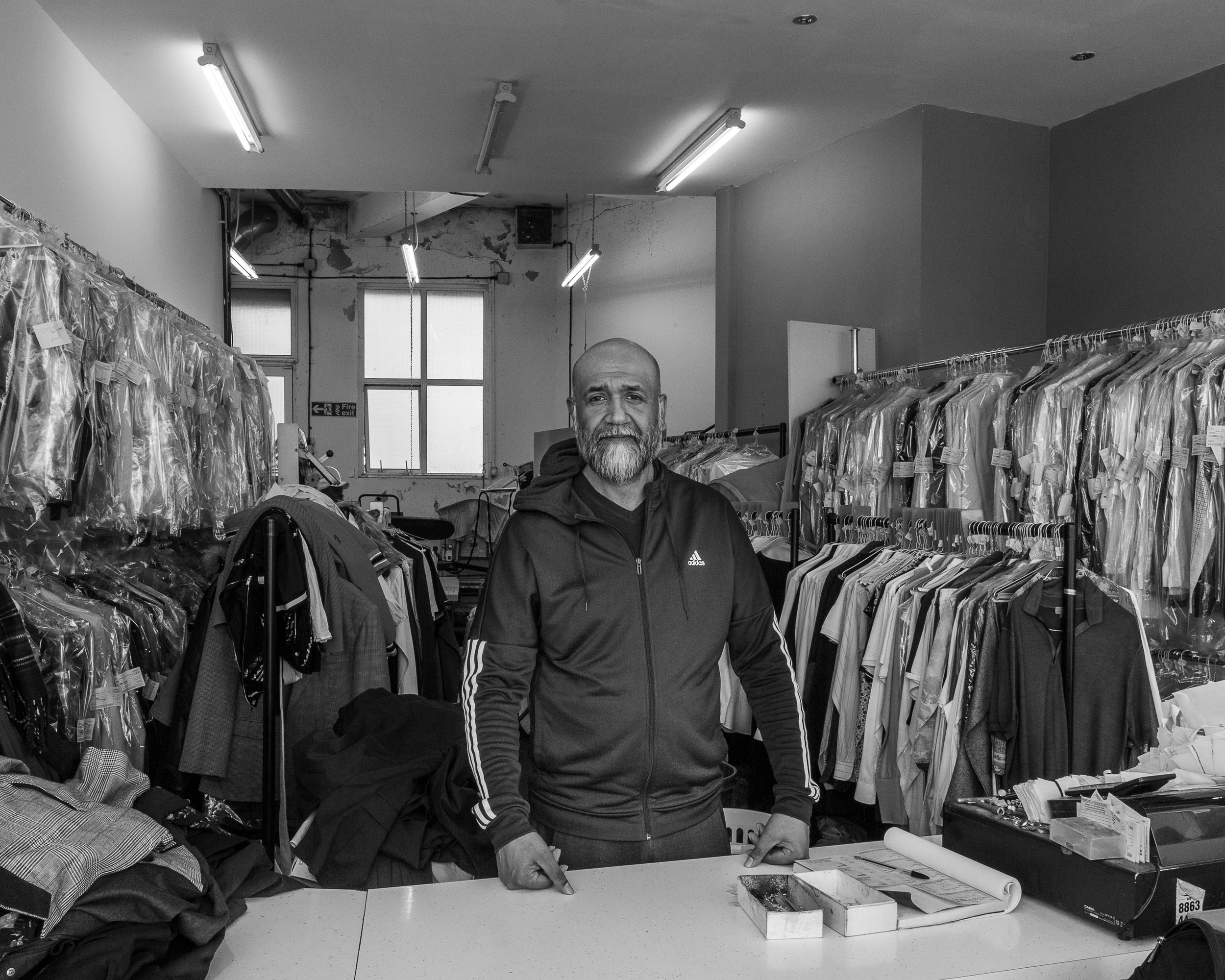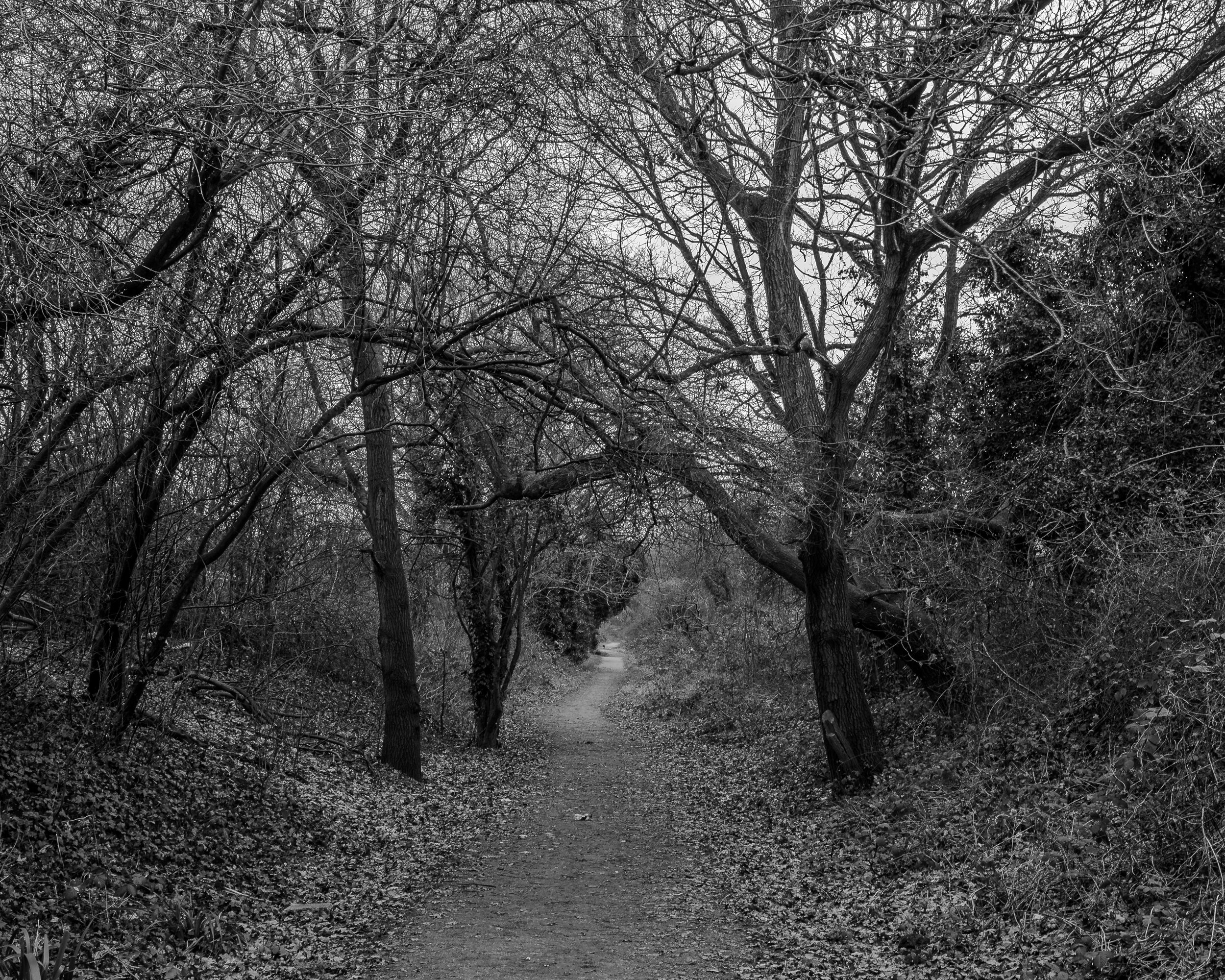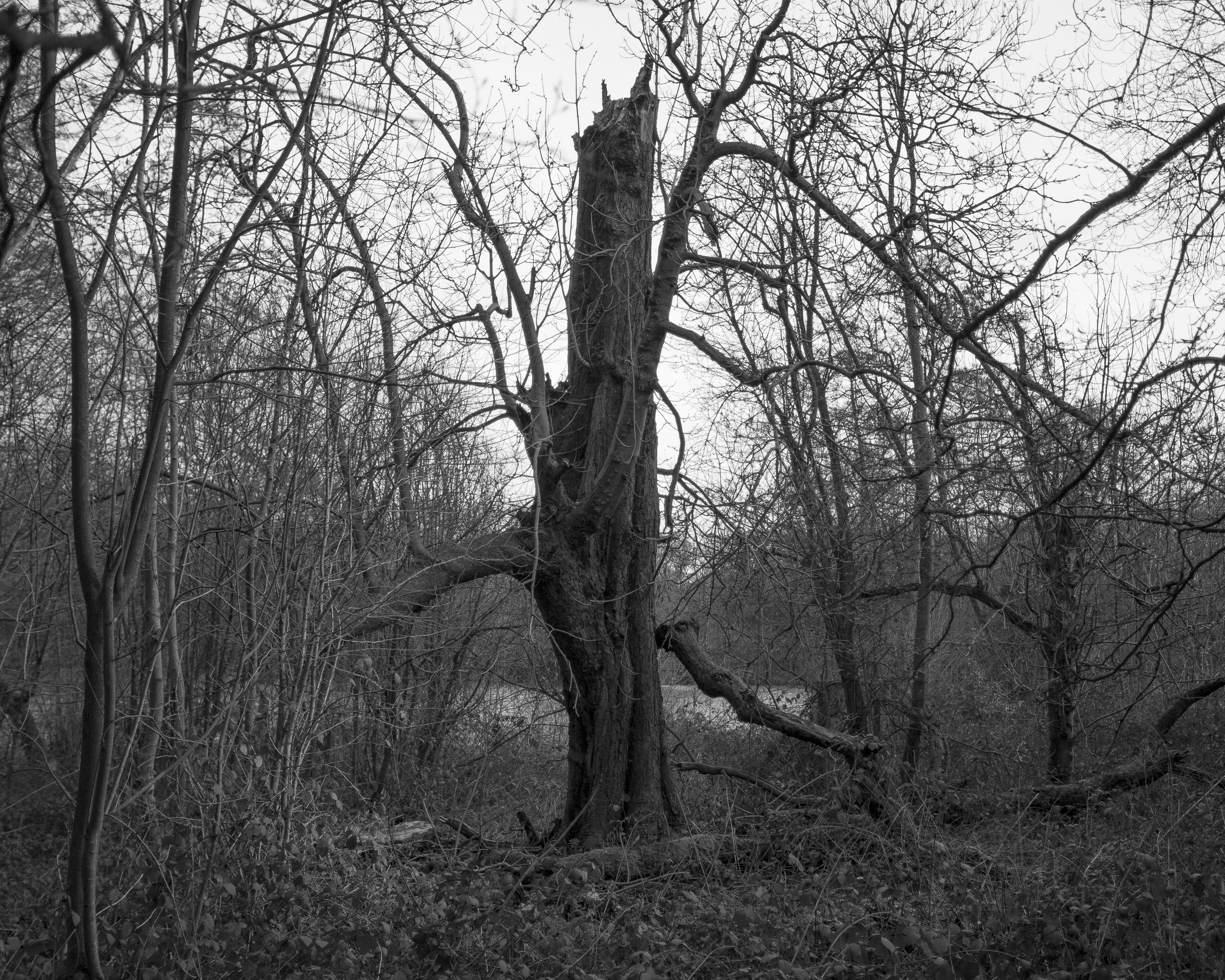The Circle
We grew up at 20 Felbridge Avenue, in a semi-detached house, middle class housing that developed around Belmont Circle, north west London. Behind our garden was the nursery and beyond that the disused railway line that linked our imaginations to the local woods. As children we spent a great deal of spare time playing outdoors. Our world consisted of the 'rattler', the local name for the former railway line that once linked Harrow to Stanmore. Belmont was, as the name suggests, the 'Bell Mount', constructed by the Duke of Chandos in 1728. The artificial mound had a summer-house perched on its summit with a spectacular view over London. The golf course was built subsequently, spreading over the hill like carpet, retaining this spirit of indolent leisure. The fringes retained the woods, which we named the 'light side' and the 'dark side,' referring to the density of woodland. On one side we made camps, on the other we raced home-made go-karts kamikaze down the hill.
Returning now there is no 'light side': the area is heavily wooded and the dark side is virtually impenetrable, the pathways long since covered over now that the passage of childhood has gone. Likewise, the shops I remember as a child have been replaced or refurbished, their façades no longer recognisable. Only the rear sides hold a semblance of memory, barely changed in their clutter. The demographic culture has changed: the butchers I had my first job in is now Halal, the Belmont Pub now the Cardamom Club, the cinema gone, as has the fresh fish shop but the chippie remains as does the Belmont Cafe. The house we lived in has also had a serious facelift: smart red brick, new door, new drive, new owner.
This was our territory that we'd laid claim to, where we built our camps and played our childhood games. When the nursery behind our house closed this area became our new territory for a summer, ripe for discovery. We built even more elaborate camps within the log piles, like air-raid shelters or post-Apocalyptic homes, adding carpet and car batteries for lighting. We built an elaborate skateboard ramp, a precursor to the Harrow Skate Park soon to be built in Byron Park. As we grew older we used the abandoned train tunnel beneath the bridge to light fires in tyres and concoct even more reckless activities. Our imagination held no bounds, from scaling the steep concrete bank to laying coins on the new train line: turning ha'pennies into pennies.
Returning like this, after 40 or more years, seeking traces of what no longer exists, is a circular journey, a passing of time analogous to the circle of life. There is a ruination to memory which takes me through a tunnel that spans a lifetime. What came first: the circle or the steam train? When did local memory turn into childlike dreams? What I know now changes the memory again. The railway was defunct before I was born, so I have no real memories of it, yet I see the train steaming through, carrying history in its carriages. The train-line would have opened at the end of the 18th Century, the same time that my great-grandparents were migrating to Britain from Poland, Lithuania and Russia - from the Pale of Settlement to the pale British climate.




































click on image for link to Exhibitions Gallery
